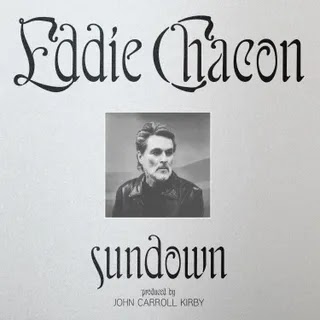Today on Pitchfork, we are celebrating the artistic bounty of Stevie Wonder with five new album reviews that span the breadth of his remarkable career.
Stevie Wonder was pretty shaken up in 1972. It was the year that his marriage to musical and romantic partner Syreeta Wright came to an end, and the year he opened for the Rolling Stones on the debauched American leg of their Exile on Main St. tour—a trek remembered for hard drugs, bombings, and arrests. By 1973, he was fixated on death.
It was a fantastic era to be spooked: Stock prices tanked while oil prices soared, all amid a steady trickle of news about a scandal revolving around the reelection of President Nixon. In New York City, a 10-year-old Black boy named Clifford Glover was killed while walking with his stepfather to a South Jamaica junkyard when an undercover cop jumped out of a Buick and shot the boy. (“A policeman who shot down a 10-year-old in Queens stood over the boy with his cop shoes in childish blood and a voice said ‘Die you little motherfucker’ and there are tapes to prove it,” Audre Lorde recalled in her poem “Power.”) The optimism of the ’60s had washed away in the blood of murdered Black leaders, revolutionaries, and innocents like Glover. Wonder sang at the young boy’s funeral, stressing to Jet afterward that his outlook was grim, and fast action was imperative: “I hope Black people realize how serious things are and do something serious about it.”
Since 1971, Wonder had been composing in almost daily sessions alongside the artists and engineers Malcolm Cecil and Robert Margouleff. The unlikely but successful partnership birthed 1972’s Music of My Mind and Talking Book, two genre-busting, head-to-toe classics where the two musicians offered an outside perspective, helping Stevie to challenge Motown convention and experiment with synthesizers and overdubs rather than working quickly with a team of writers and session players. The feat boosted Stevie, a reliable hitmaker up until then, into a different milieu, establishing him as a master of the album format while launching back-to-back chart-toppers in “Superstition” and “You Are the Sunshine of My Life.” Touring with the Stones provided access to rock audiences. And Cecil and Margouleff were pushing hard on lyrics, getting Stevie to touch on the political and metaphysical issues he fixated on in private, to sing less about romance and more about the state of the world. “I’d encourage him to write more songs that had bite,” Cecil recalled in author Mark Ribowsky’s 2010 biography Signed, Sealed, and Delivered: The Soulful Journey of Stevie Wonder. “Whenever Stevie came in with a song, I’d twit him, ‘Oh, another bloody love song, huh Stevie?’” He teased what he’d worked on in the studio that summer with the first single, “Higher Ground,” which doubled down on the synth-laced funk and spiritual concerns of “Superstition” as Wonder imagined a better life at the end of the toils of this one. The tragedy of Clifford Glover colored the second single, “Living for the City,” the centerpiece of Wonder’s 1973 classic Innervisions.
“Living for the City” is the key to understanding the many intersecting tensions upon which the greatness of Innervisions rests, the push and pull between the engineers and the artist, the technical innovations, the conceptual bombast, the bond between man and machine, and the roiling sociopolitical outrage. The narrative traces the plight of a Black man from the South devoured by cruelty and systemic racism in the North. Like a Greek tragedy where the protagonist’s fatal flaw is thinking he could escape bigotry, the tale of the boy from Mississippi mirrors experiences of Black American workers since the Great Migration, when redlining, biased policing, and judicial system jank enforced a second-class citizenhood. Wonder sings insistently over a driving funk rhythm—Cecil would interrupt vocal takes in order to rile him up—and coaxes the groove to a climax with atmospheric sounds from stacks of keyboards and synthesizers, chiefly Cecil and Margouleff’s room-sized polyphonic synth, called “The Original New Timbral Orchestra,” or TONTO.
When Wonder first arrived in the ‘60s, he shocked audiences as a young unsighted singer-songwriter, and then wowed them again with a revealing and killer drum solo at 1969’s Harlem Cultural Festival, which was recently resurfaced by Questlove’s Summer of Soul. He later impressed a television audience with his ease with machines in a memorable 1972 appearance on The David Frost Show, where he demoed the ARP 2600 synthesizer and showed his talkbox off in a stunning medley of the Carpenters’ “Close to You” and the Jackson 5’s “Never Can Say Goodbye.” (Creators of these instruments loved the promotion. They put Stevie in the adverts.) He was an autodidact without the benefit of sight, and Innervisions was a wide-ranging display of his talents and interests. Wonder plays every sound on the record, save for some electric and acoustic guitar and bass parts and bits of the percussion, and gives a virtuosic performance, speaking to a universal audience while centering the prideful perseverance of a Black America failed by its own country.
The ’70s were boom times for groundbreaking work with synths, following ‘60s innovations at America’s Moog Music, the UK’s Electronic Music Studios, and elsewhere. In 1971 and 1972, synthetic, sequenced sounds swept into art-rock and jazz, trickling down into popular music. Caped keyboardist Rick Wakeman joined English prog group Yes and played the Minimoog on 1971’s Fragile. Todd Rundgren used EMS’s portable VCS3 synth on his early solo records. It’s the mess of knobs to the right of the singer-songwriter in the studio pic in the liner notes of 1972’s Something/Anything?, a crucial ingredient in the Who’s “Won’t Get Fooled Again,” and the instrument Brian Eno played in Roxy Music. Wonder pushed the envelope not just by playing most of Innervisions by himself at a time when popular Black artists could not all count on enjoying such freedoms, but also in his commitment to tones and textures still new to mainstream music. When summarizing he appeal of synthesizers to the presenter David Frost, Wonder said,“The whole point of the instrument, being that you can do so many beautiful things with it, [is to] make sounds that are bigger than life.” Stevie reveled in the funky possibilities of the clavinet on “Higher Ground.” In “Golden Lady,” a Moog bass stood in for the fretwork of a gifted session bassist, to say nothing of Wonder’s ease with the mercurial TONTO, innovation borne out of the artist’s insistence on recording with a skeleton crew.
Innervisions is a tricky album, very much a soul thing with direct ties to records in its Motown lineage like Marvin Gaye’s What’s Going On, whose social consciousness Stevie tried to channel on 1971’s Where I’m Coming From, although it is best remembered for “Never Dreamed You’d Leave in Summer” and “If You Really Love Me,” notable detours from its political messaging. Innervisions surveys scenes outside of Motown. The anti-drug anthem “Too High” gestures to the technical, intricate grooves of jazz-fusion; “Living for the City” is as much art-rock epic as funk/soul masterpiece. Wonder traveled around the world in nine songs, matching the proggy experiments in contemporary rock gems like Pink Floyd’s Dark Side of the Moon and Todd Rundgren’s A Wizard, a True Star; the playful synthesizer parts in the funk bombs from Birds of Fire by Mahavishnu Orchestra and Herbie Hancock’s Head Hunters; the nervous hope of Donny Hathaway’s Extension of a Man; the acoustic jazz of Baden Powell’s Solitude on Guitar; and the horn-filled salsa of Willie Colón and Héctor LaVoe’s Lo Mato. Innervisions collapsed the spaces between avant-garde and mainstream, rock and soul, and jazz and pop music. They had all been playing the same instruments.
Like What’s Going On, Innervisions lays out a problem, then offers solutions: The stresses of the modern age are many, but with truth, goodness, love, and faithfulness, we can beat back the darkness. Wonder’s albums had never been this concise or cohesive in message. Innervisions was his first full-length without any co-writers or covers, a monumental endeavor for both Motown—a hit factory betting against its history again by letting an artist write his own songs—and Stevie, who was pulling thematically consistent pieces out of thin air. The album doesn’t judge or sell easy answers. It nudges you in the direction of a more mindful stewardship of our world and then lets you know that the task will be difficult. (“Jesus Children of America” is fascinatingly slippery. It implores you to place less stock in physical gratification and more in the edification of the mind and soul. It reminds you that this path is riddled with grifters and conmen. And it’s way too hyped about transcendental meditation to qualify as run-of-the-mill church proselytizing. Innervisions is a potpourri of ideas from Eastern and Western philosophies, but its call to inspire change through personal and cultural reckoning is grounded, less pie in the sky and more mutual aid and good vibes. It’s a very ’70s outlook, a specific response to the reverberations in modern bohemian culture as the counterculture grew more fractured and paranoid, but it still rings true in its questing for peace and love in the shadows of systemic racism and widespread political corruption.
Three days after Innervisions was released, Stevie Wonder was traveling through North Carolina on the way to a benefit concert for an independent Black radio station when his driver bumped a flatbed truck packed with wood logs, sending one careening through the windshield into Wonder’s forehead, causing a brain contusion. (It is said that upon hearing “Higher Ground” while in a coma, Stevie moved his fingers.) Perhaps he was right to be terrified in 1973. He was right that America was in dire straits. Nixon resigned in 1974 with Innervisions’s “He’s Misstra Know-It-All”—“He’s a man with a plan/Got a counterfeit dollar in his hand”—still rattling around as Stevie’s latest single. The album’s strides in exploring a wider palette of instruments for Black funk music were met and matched in the brilliance of Parliament-Funkadelic and Prince in later years. (The LinnDrum, American designer Roger Linn’s matter-of-factly titled drum machine, is as crucial to Prince’s ’80s as TONTO is to Stevie’s ’70s.) Innervisions endures as a touchstone for young auteurs crafting expansive, orchestral music and songwriters tackling big issues without overwhelming listeners.
Genius shines in any setting. This is music pliable enough to have been reworked by Barbra Streisand, who had a hit in 1974 recasting Wonder’s conciliatory breakup tune “All Is Fair in Love” as an orchestral ballad; Madlib, whose side project Yesterday’s New Quintet turned “Visions” into a Brazilian jazz workout on the 2004 covers album Stevie; and the Red Hot Chili Peppers, whose rendition of “Higher Ground” on 1989’s Mother’s Milk added screaming guitars and gang vocals. When R&B group Troop sang “Living for the City” in Mario Van Peebles’s 1991 crime flick New Jack City, it highlighted how little in the character of New York had changed since Stevie sang about the city destroying young Black men almost two decades earlier, a truth reinforced in hundreds more accounts of horrific police killings and brutality stretching out into the 21st century. Innervisions addressed the musical tastes and political jitters of 1973, but foresight keeps it relevant. It implores us to keep striving.
















0 comments:
Post a Comment